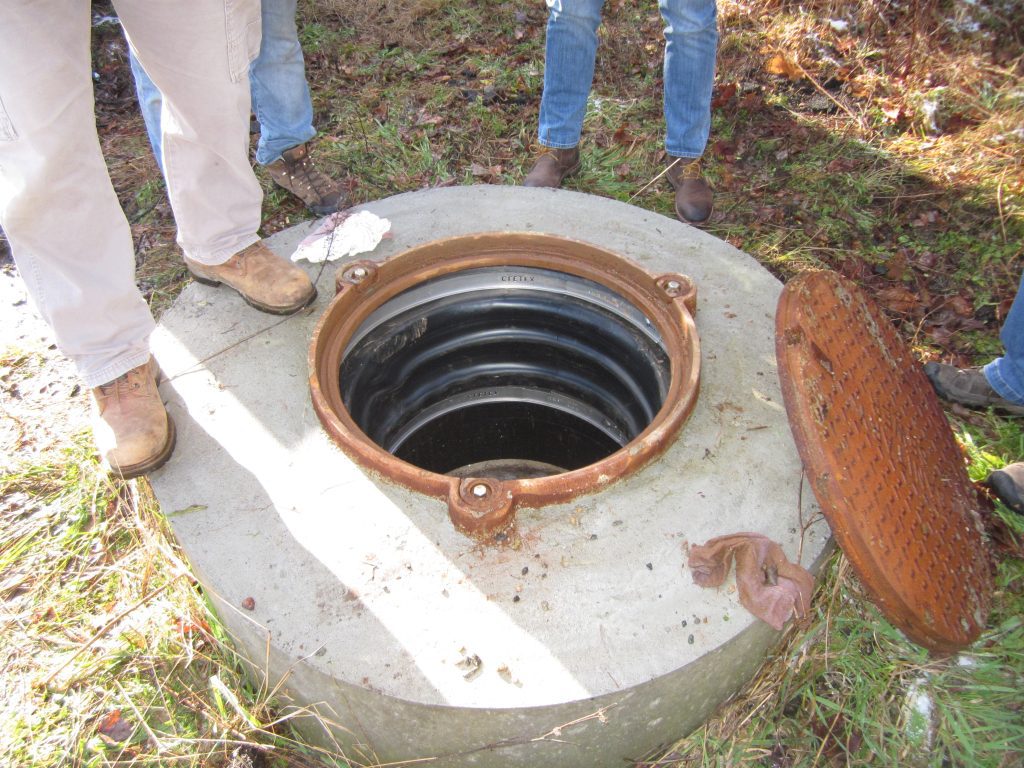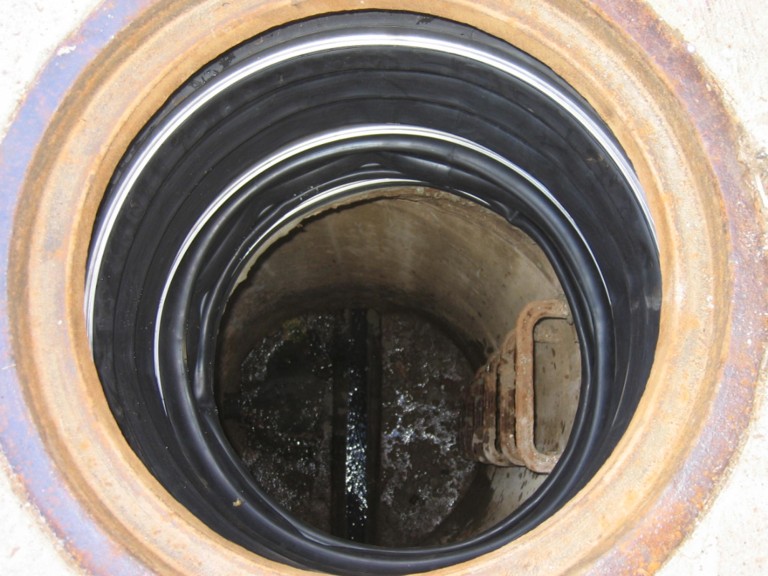Most sanitary manholes in this region have what is known as a “chimney seal” installed, which serves as a long-lasting protection against water penetration. There are chimney seals for the inside and outside. The manhole must now be completely sealed off to prevent groundwater infiltration.
Although there are numerous types of chimney seal products, the following are the most popular ones:
-a 2-part epoxy paint product (often polyurea product)
-wrapped heat-shrinking sheeting
-product that is a rubber sleeve or gasket and has clamping bands.
INTERNAL EPOXY CHIMNEY SEAL
The installation process for epoxy products that are frequently used to a structure’s interior is as follows. To encourage bonding and adhesion, the region of encapsulation is abraded using a minimum 70cfm sandblaster. After that, the area is cleaned up by being blasted with air. To quickly remove any moisture from the region, acetone is wiped along the area to be enclosed. With a brush, a primer is applied to the dry encapsulation surface to a height of about 2″ above and below the desired encapsulating region. The first component of the epoxy is put first, then the second part.


HEAT APPLIED SHEETING EXTERNAL CHIMNEY SEAL
The wrap-around heat-shrinkable sheeting product is typically applied to the exterior of the area of encapsulation in the manner described below. The application area is completely cleared of dirt and debris before being dried. The rubber sheeting is then cut to the required length, including the lap. After that, the first sheeting is wrapped around the encapsulating area using the stick-on side. The first sheet is then burned using a propane flame to remove moisture and temporarily fix it in place so that it cannot move. After that, primer is applied using a brush. The last layer is then placed in place by being wrapped around the primer and overlapped. The sheeting is then heated circumferentially from the bottom up until the desired bond is attained. The sheeting that is sticking out above the casting’s flange is then trimmed, and heat is applied for a solid final bond. After that, the assembly is examined and backfilled. If specific excavation and backfilling are required, outside wraps may be difficult to complete.
In order to best serve our clients, DLVEWS represents the following products:
Additional options are also offered as needed based on project scope.